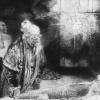Архив "ядрени оръжия"; дискусии
-
Теми
-
Същност или залепен етикет? 1 2
От Втори след княза, in Нещата в себе си са етап на познание, сега изследваме нещата по отношение друго нещо
- 31 мнения
- 421 views
-
Руско-украинската война 2022-2024 година. 1 2 3 4 43
От Р. Теодосиев, in Руско-украинската война 2022 година.
- 1073 мнения
- 42369 views
-
Мемове, свързани с руско-украинската война през 2022 година 1 2 3 4 16
От nik1, in Руско-украинската война 2022 година.
- 387 мнения
- 26256 views
-
- 3400 мнения
- 135489 views
-
- 2261 мнения
- 105758 views
-
-
Последно разглеждащи 0 Потребители
- No registered users viewing this page.




Recommended Posts
Напиши мнение
Може да публикувате сега и да се регистрирате по-късно. Ако вече имате акаунт, влезте от ТУК , за да публикувате.